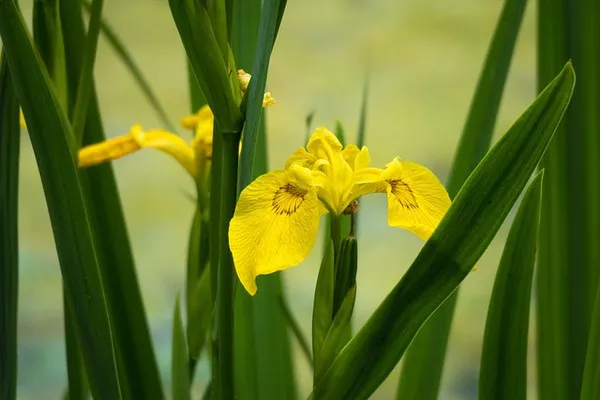Lily flowers, with their elegant and captivating beauty, have been cherished and admired for centuries. Beyond their aesthetic appeal, lilies carry profound symbolism that varies across cultures and historical contexts. From representing purity and virtue to conveying messages of love and renewal, these stunning blooms have a rich and diverse significance. In this article, we will explore the intricate world of lily symbolism, delving into their cultural and historical connotations, their role in various occasions, and the different types of lilies that carry distinct meanings.
Lilies: Nature’s Emblem of Purity
One of the most prominent and universally recognized associations with lilies is purity. The pure, pristine petals of lilies, often gleaming in various shades of white, evoke a sense of innocence and cleanliness. This symbolism can be traced back to ancient times, making lilies a timeless emblem of virtue and wholesomeness.
In Christian traditions, lilies are closely linked to the Virgin Mary, symbolizing her purity and chastity. Legend has it that when the angel Gabriel visited Mary to announce her pregnancy, he handed her a white lily as a symbol of her divine purity. This connection has cemented lilies as a sacred flower in Christian ceremonies, particularly in weddings and funerals.
Lilies in Art and Literature
The lily’s symbolic value extends into the realms of art and literature. Renowned artists and writers have often used lilies to convey deeper messages and emotions. A notable example is the famous painter Vincent van Gogh, who depicted lilies in several of his works. His use of lilies, particularly in “Lilies” and “Vase with Pink Roses,” showcases the captivating beauty and symbolizes life, hope, and purity.
In literature, lilies have appeared in various forms, from biblical references to modern poetry. In William Wordsworth’s “To the Small Celandine,” the poet compares the flower to the beauty of a lily. This use of lilies as a metaphor is a testament to their enduring appeal and deep-seated symbolism.
Cultural Variations in Lily Symbolism
While purity is a core theme in lily symbolism, the interpretation of these flowers can vary significantly from one culture to another.
In Greek mythology, for instance, the lily was associated with the goddess Hera, who represented marriage, family, and protection. Thus, lilies were used in Greek wedding ceremonies to invoke the blessings of the goddess for a prosperous and harmonious marriage.
In Chinese culture, the lily takes on a different connotation. There, the lily represents motherhood and the renewal of life. It is often associated with the birth of children and the celebration of new beginnings. The Chinese believe that lilies have a protective quality and will safeguard them from negative energies.
Meanwhile, in French culture, lilies hold an association with royalty and honor. The fleur-de-lis, a stylized lily, has been a symbol of French monarchs for centuries, emphasizing the royal lineage and nobility.
Varieties of Lilies and Their Unique Meanings
Lilies come in a variety of types and colors, each with its own distinctive symbolism. Let’s explore some of the most common lily varieties and their meanings:
White Lilies: White lilies symbolize purity, virtue, and the renewal of life. They are often used in weddings and funerals to represent the innocence and rebirth of the soul.
Easter Lilies: These white, trumpet-shaped lilies are closely associated with the Christian holiday of Easter. They represent the resurrection of Jesus Christ and the promise of eternal life.
Calla Lilies: Calla lilies are known for their elegance and sophistication. They symbolize beauty and purity and are often used in weddings to represent the union of two souls.
Tiger Lilies: These striking orange lilies symbolize wealth, prosperity, and pride. They are also associated with female fertility and motherhood.
Daylilies: Daylilies are often linked to motherhood and motherly love. They represent nurturing and care.
Stargazer Lilies: Stargazer lilies are known for their vibrant colors and strong fragrance. They symbolize ambition, encouragement, and the pursuit of success.
Casa Blanca Lilies: These white lilies signify purity and enlightenment. They are often used in spiritual and religious contexts to represent the quest for spiritual growth and understanding.
Asiatic Lilies: Asiatic lilies come in various colors and symbolize positivity, creativity, and passion. They are often used to express romantic feelings and devotion.
Lilies in Occasions and Celebrations
Lilies are not only celebrated for their symbolism but are also widely used in various occasions and celebrations. Here are some instances where lilies play a significant role:
Weddings: Lilies, especially white ones, are a popular choice for wedding bouquets and decor. They represent purity, unity, and the hope for a long and prosperous marriage.
Funerals: Lilies are a common sight at funerals, where they symbolize the innocence of the departed soul and the hope for their peaceful journey into the afterlife.
Religious Ceremonies: Lilies are frequently used in religious ceremonies and festivals to symbolize purity and divine blessings.
Mother’s Day: Lilies, particularly Calla lilies, are gifted to mothers on Mother’s Day as a token of love and appreciation for their nurturing and caring nature.
Anniversaries: Stargazer lilies are often given as anniversary gifts, symbolizing encouragement and best wishes for the future.
Expressions of Love: Lilies, with their diverse range of colors and meanings, make them a versatile choice for expressing love and affection in various relationships.
In conclusion
lilies are much more than just visually stunning flowers; they carry a profound and diverse range of meanings and symbolism that have evolved over centuries and across different cultures. Whether they represent purity, motherhood, love, or renewal, lilies continue to play a significant role in our lives, connecting us to our deepest emotions and beliefs. So, the next time you encounter a lily, take a moment to appreciate the rich tapestry of symbolism that these exquisite blooms bring to the world of flowers.


